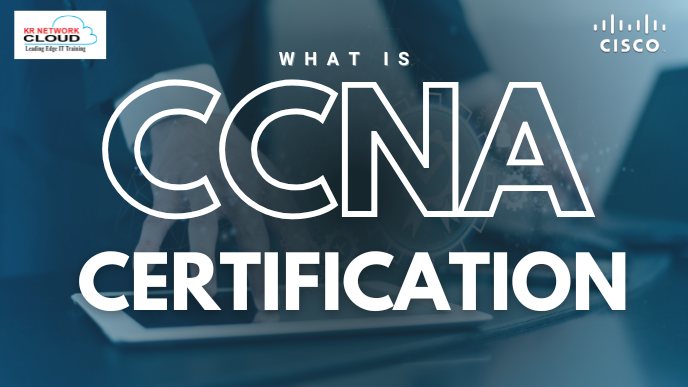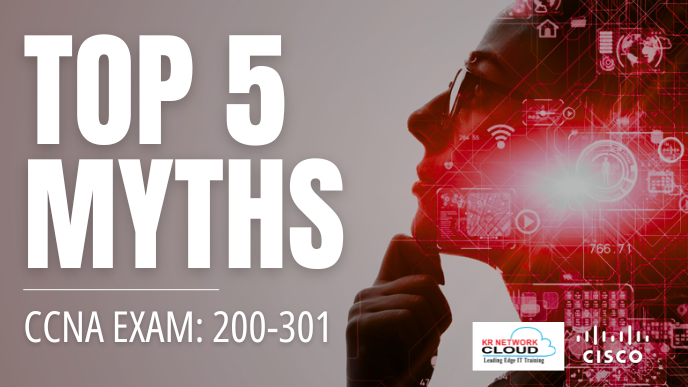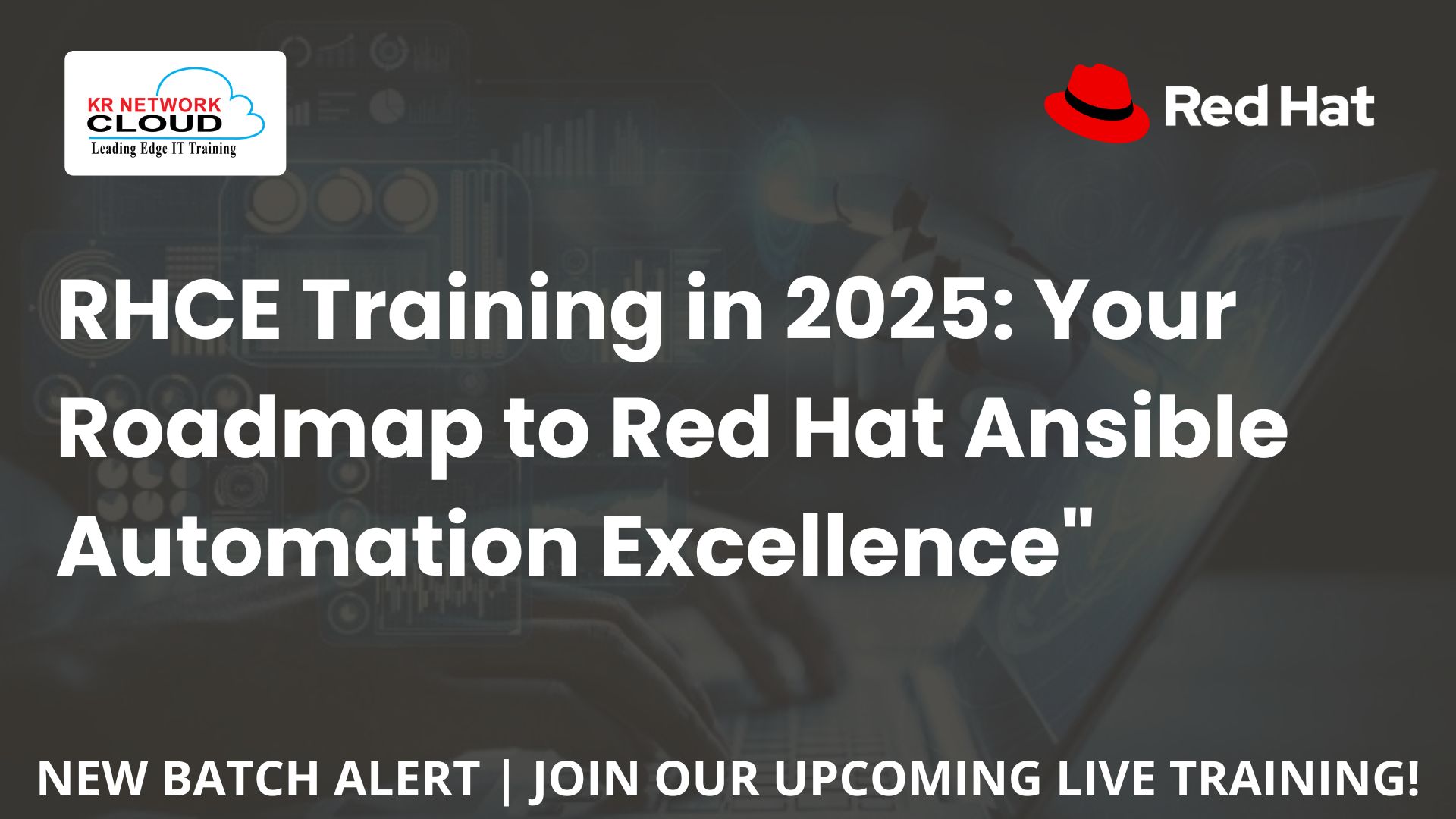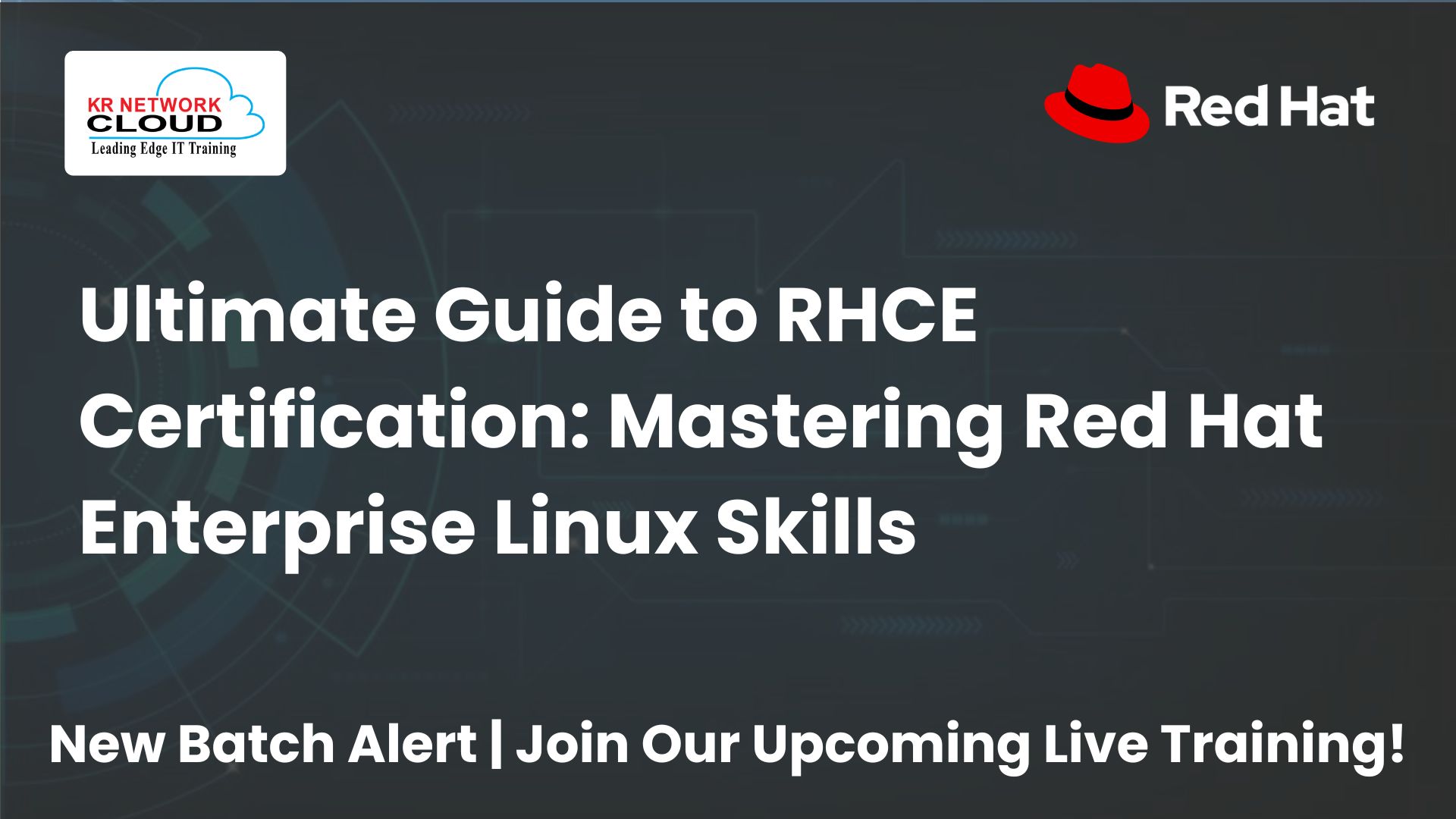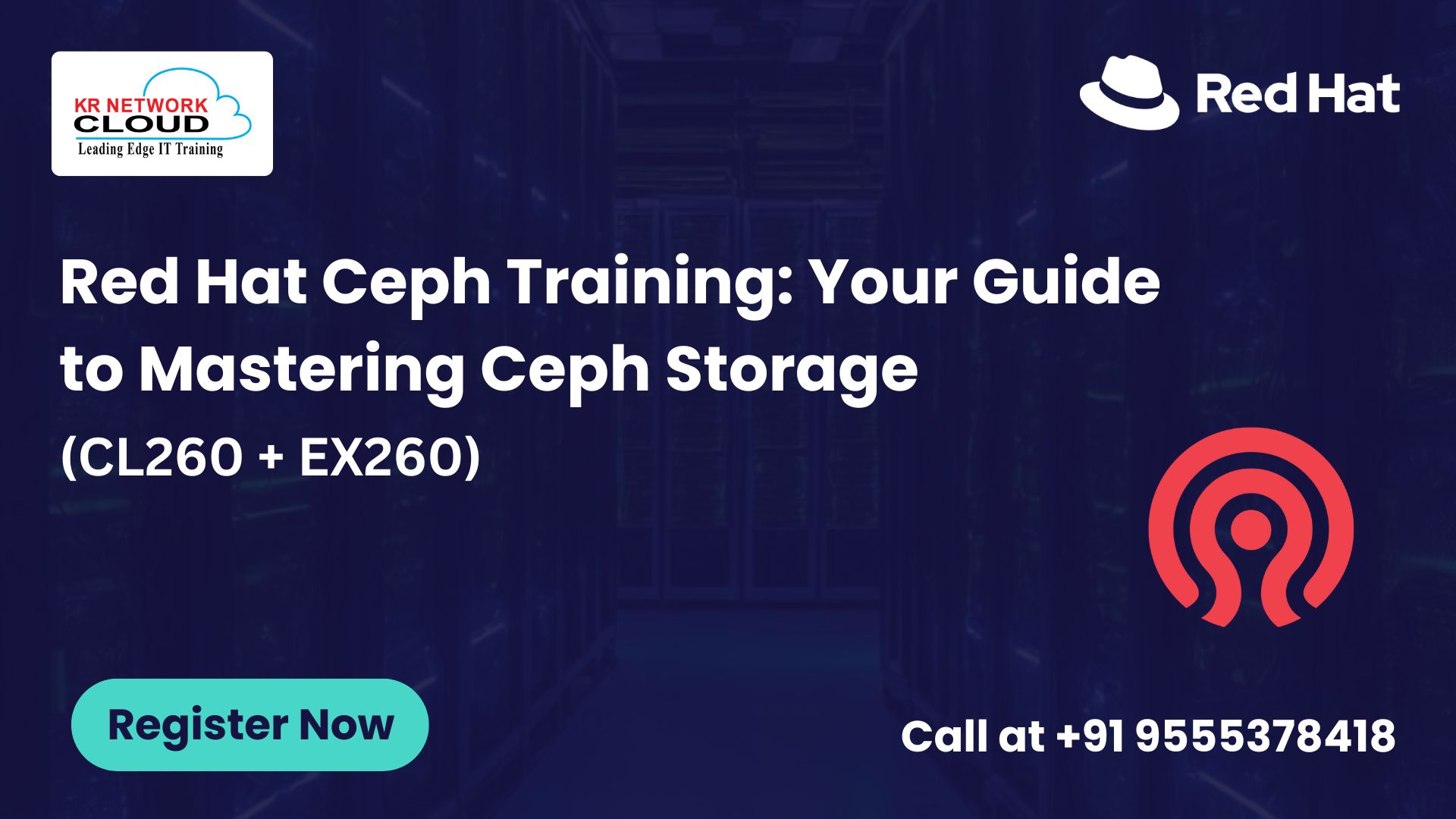Evolution of VMware vSphere 8.0: Industry Expert Insights

- KR NETWORK CLOUD
- March 29, 2025
VMware vSphere 8.0 represents the cutting edge of data center virtualization, combining scalability, security, and cloud-native integration. This guide explores everything from hardware requirements and deployment best practices to the evolution of vSphere and the historical significance of hypervisors. Paired with insights from KR Network Cloud, a leader in VMware training, this article equips IT professionals with the knowledge to dominate modern virtualization challenges.
Hardware Specifications for VMware ESXi 8.0
VMware ESXi 8.0, the latest iteration of VMware’s bare-metal hypervisor (updated as of March 2025), demands specific hardware configurations to ensure optimal performance. Understanding these requirements is critical for IT professionals aiming to deploy or upgrade their virtualization infrastructure.
CPU Requirements:
ESXi 8.0 requires a minimum of two 64-bit x86 processor cores, with the NX/XD bit enabled in the BIOS. Compatibility is limited to modern CPUs listed in the VMware Compatibility Guide. Older architectures like Intel Sandy Bridge or AMD Bulldozer are excluded due to missing XSAVE support, which is essential for advanced virtualization features.
Memory Requirements:
A minimum of 8 GB of physical RAM is required, though VMware recommends 12 GB for production environments to efficiently run multiple virtual machines (VMs). Hardware virtualization support (Intel VT-x or AMD RVI) must be enabled to support 64-bit VMs, and a 72-hour memory test is advised to detect latent hardware errors before deployment.
Storage Specifications:
The hypervisor requires a 32 GB boot device, such as an HDD, SSD, or NVMe drive, which must not be shared between hosts. For VM storage, SCSI disks or local RAID LUNs are preferred, while SATA disks are treated as remote storage and excluded from scratch partitions. Advanced configurations, like enabling the High-Performance Plug-in (HPP) for NVMe, can significantly boost I/O performance.
Networking:
Gigabit or faster Ethernet controllers are mandatory, with UEFI firmware recommended over legacy BIOS for secure booting. Note that software FCoE adapters are deprecated in ESXi 8.0, necessitating hardware FCoE adapters for storage networking.
Deployment Strategies and Industry Insights
Deploying ESXi 8.0 effectively requires more than just meeting hardware specs—it demands strategic optimizations and industry-tested practices. Below are key strategies to maximize performance, security, and scalability:
1. BIOS and Firmware Optimization
Before installation, configure the BIOS to enable virtualization extensions (VT-x/AMD-V), EPT/RVI for memory management, and AES-NI for encryption acceleration. Disable unused hardware components like COM ports to free resources, and set power management to “OS Controlled Mode” to allow ESXi to dynamically adjust CPU states.
2. Storage Best Practices
Prioritize SSDs or NVMe drives for boot devices and VM storage to leverage high IOPS and low latency. For environments using hardware-accelerated storage, enable VMware vSphere APIs for Array Integration (VAAI) to offload tasks like cloning or snapshots to the storage array. Adjust the Disk.SchedNumReqOutstanding parameter to optimize queuing for NVMe workloads, as detailed in VMware’s KB article 1268.
3. Networking Configuration
Use server-class NICs that support TCP Segmentation Offload (TSO), jumbo frames, and checksum offloading. For high-bandwidth environments (10 Gb/s or faster), implement Network I/O Control (NetIOC) to prioritize critical traffic like vMotion or storage I/O. Ensure NICs are installed in PCIe x8 slots or higher to avoid bandwidth bottlenecks.
4. Automation and Advanced Tools
Leverage VMware PowerCLI for scripting repetitive tasks like VM provisioning or host configuration. Use vSphere Tags to categorize resources and automate workflows—for example, applying backup policies to VMs tagged as “mission-critical.”
Industry Secret: VMware’s Enhanced vMotion Compatibility (EVC) allows mixing CPU generations within a cluster, but always validate compatibility using the VMware Compatibility Guide to avoid performance issues.
The Evolution of VMware vSphere: From 4.0 to 8.0
VMware vSphere has undergone transformative changes since its inception. Here’s a detailed look at its evolution:
vSphere 4.0 (2009):
Launched with foundational features like the vNetwork Distributed Switch for centralized network management, Fault Tolerance (FT) for zero-downtime VMs, and Storage vMotion for live VM storage migrations. It supported up to 64 logical CPUs per host and 1 TB of RAM.
vSphere 5.0 (2011):
Introduced the vSphere Storage Appliance (VSA) for clustered storage and vShield Endpoint for VM security. Scalability improved to 160 logical CPUs and 2 TB RAM per host, with support for 32 vCPUs per VM.
vSphere 6.0 (2015):
A landmark release with Virtual Volumes (vVols) for policy-driven storage, Instant Clone for rapid VM provisioning, and Long-Distance vMotion for cross-cloud migrations. It scaled to 480 CPUs and 12 TB RAM per host.
vSphere 6.5 (2016):
Streamlined management with the HTML5-based vSphere Client and vCenter Server Appliance (VCSA). Security enhancements included VM-level encryption and Secure Boot for ESXi.
vSphere 7.0 (2020):
Integrated Kubernetes via VMware Tanzu, enabling unified management of containers and VMs. It introduced the Lifecycle Manager for automated patching and Identity Federation for ADFS/Okta integration.
vSphere 8.0 (2022):
The current flagship supports dual Data Processing Units (DPUs) for hardware-accelerated networking, enhanced Distributed Resource Scheduler (DRS) for memory workload balancing, and a GUI for vNUMA configuration. It also meets U.S. Department of Defense Impact Level 6 compliance, making it ideal for highly regulated industries.
| Feature | vSphere 4.0 (2009) | vSphere 5.0 (2011) | vSphere 6.0 (2015) | vSphere 6.5 (2016) | vSphere 7.0 (2020) | vSphere 8.0 (2022) |
|---|---|---|---|---|---|---|
| CPUs per host | 64 | 160 | 480 | 576 | 768 | 768+ (specific limits vary) |
| RAM per host | 1 TB | 2 TB | 12 TB | 12 TB | 16 TB | 16 TB+ (enhanced support) |
| vCPU per VM | 8 | 32 | 128 | 128 | 128 | 128+ (with new hardware) |
| vMEM per VM | 255 GB | 1 TB | 4 TB | 6 TB | 6 TB | 6 TB+ (optimized) |
| VMDK Size | 2 TB | 2 TB | 62 TB | 62 TB | 62 TB | 62 TB |
| Cluster Size | 32 | 32 | 64 | 64 | 64 | 64 |
| FT Limit | 1 vCPU, 64 GB | 1 vCPU, 64 GB | 4 vCPU, 64 GB | 4 vCPU, 64 GB | 8 vCPU, 128 GB | 8 vCPU, 128 GB+ (improved) |
| New Features | Distributed Switch, FT, Storage vMotion | vSphere Storage Appliance, vShield Endpoint | Virtual Volumes, Instant Clone | Simplified UI, Enhanced Security | Tanzu, Trust Authority, Lifecycle Manager | Dual DPU, Enhanced DRS, vNUMA GUI |
Why This Evolution Matters:
Each iteration addresses growing demands for scalability, hybrid cloud readiness, and security. vSphere 8.0’s support for modern workloads (AI, ML, and edge computing) cements its role as a cornerstone of enterprise IT.
Why vSphere 8.0 is a Game-Changer for Modern Data Centers
VMware vSphere 8.0 redefines virtualization with features that address today’s IT challenges:
- Server Consolidation and Cost Savings:
By running dozens of VMs on a single host, organizations reduce hardware costs, power consumption, and physical footprint. - Dynamic Resource Allocation:
The enhanced DRS intelligently balances CPU, memory, and storage across clusters, adapting to workload demands in real time. - High Availability and Resilience:
Features like Fault Tolerance (FT) and vSphere HA ensure mission-critical applications remain online, even during hardware failures. - Hybrid Cloud Flexibility:
With Long-Distance vMotion and native integration with AWS/Azure, workloads migrate seamlessly between on-premises and cloud environments. - Kubernetes Integration:
VMware Tanzu allows DevOps teams to manage containers alongside VMs, bridging traditional and cloud-native workflows.
The Historical Context of Hypervisors
Understanding hypervisor history enriches your ability to optimize virtual environments:
- 1960s: IBM’s CP-40 and CP-67 mainframes pioneered full virtualization, allowing multiple operating systems to run concurrently.
- 1980s: IBM’s PR/SM introduced logical partitioning (LPARs), isolating workloads on System/370 mainframes.
- 1990s–2000s: VMware brought x86 virtualization to commodity hardware, democratizing access to enterprise-grade virtualization.
Key Takeaway: Modern hypervisors inherit design principles from decades of innovation. For example, ESXi’s isolation of VM kernels mirrors mainframe partitioning, while its scalability reflects advancements in x86 architecture.
KR Network Cloud: Your Partner in VMware Mastery
Since 2010, KR Network Cloud has trained thousands of IT professionals in Delhi and beyond. Their VMware Data Center Virtualization program covers:
- Hands-On Labs: Real-world scenarios using ESXi 8.0 and vCenter Server.
- Certification Prep: Focused training for VMware Certified Professional – Data Center Virtualization (VCP-DCV).
- Job Assistance: Resume building, interview coaching, and placement support.
With flexible online and classroom options, KR Network Cloud ensures learners gain the practical skills needed to excel in roles like cloud architect or virtualization engineer.
FAQs: VMware vSphere 8.0
Q. What is VMware vSphere and how does it facilitate data center virtualization?
A. VMware vSphere 8.0 is a suite of virtualization products that includes the ESXi hypervisor and vCenter Server, enabling efficient management and operation of virtualized data centers by aggregating physical resources into virtual ones.
Q. What are the hardware requirements for installing ESXi 8.0?
A. ESXi 8.0 requires at least two CPU cores, 8 GB RAM (12 GB recommended), and 32 GB storage. Ensure hardware is listed in the VMware Compatibility Guide.
Q. How has vSphere evolved from version 4.0 to 8.0?
A. vSphere has seen significant improvements in scalability, security, and feature sets, including support for more CPUs and RAM, introduction of Virtual Volumes, Instant Clone, and integration with Kubernetes, with vSphere 8.0 adding dual DPU support and enhanced DRS.
Q. What are the key new features in vSphere 8.0?
A. Key features include support for the latest CPUs, increased resource limits, dual DPU support for high availability, enhanced Distributed Resource Scheduler (DRS), and improved security compliance with U.S. Department of Defense standards.
Q. Why is it important to understand the history of hypervisors?
A. Understanding hypervisor history, starting from IBM’s CP-40 in 1967 to VMware’s x86 innovations, provides context for current technologies, aiding in better decision-making, troubleshooting, and optimization of virtual environments.
Q. What are some best practices for deploying ESXi 8.0?
A. Best practices include validating hardware compatibility, optimizing BIOS settings, using SSDs for storage, configuring networking for redundancy, and leveraging automation tools like PowerCLI for efficiency.
Q. How can I get certified in VMware vSphere 8.0?
A. To get certified, take VMware’s official training courses and pass exams like the VCP-DCV (VMware Certified Professional – Data Center Virtualization), available through providers like KR Network Cloud.
Q. Where can I find comprehensive training for VMware vSphere 8.0?
A. KR Network Cloud offers in-depth training programs for VMware vSphere 8.0, providing live training, hands-on experience, lab facilities, and preparation for certification exams, ensuring practical skills for IT professionals.
